40-db-pad
What exactly is a dB Pad?
A dB pad is a passive circuit that helps match the impedance of different devices by lowering the dB output to avoid overloading and distortion.
Where and why to use it.
Many camcorders, DSLRs, or a “Zoom’ field recorders are equipped with external mike input jacks. Most of these models have a built-in pre-amp. If you plug the output of a mixer into the device, the resulting sound no matter how much you lowered the volume, will be distorted. This occurs because the levels are mismatched. Built-in mics sound OK for general video, but if you want to videotape a gig using the house mix with a couple of additional mikes, you’ll want clean sound. You can use a camcorder as a stereo master recorder with a basic static video shot. The question is how to eliminate the mismatch causing distortion. It requires an attenuation pad.
Radio Shack sold a 40 dB attenuation pad. It wasn’t too expensive but it was monaural. So I set about designing my own stereo version. Using design equations and simulation software, I designed a T-Pad that dropped the sound approximately 40 dB. I tried it and it worked.
To record in stereo you’ll need to make two, one for the left channel and one for the right. It is easy to fit the three resistors into the socket cover. Use ¼ watt or 1/8 watt resistors. This should work wherever you need to use a line-level signal into a mike level jack. You could even plug a line-level output such as an MP3 player into a guitar amp for example.
Zoom Q2n
Here is another great example of where you might need a 40db pad.
The Zoom Q2n is much better to record yourself or your band than a Webcam. I recently created a video of myself singing and playing guitar. I wanted to be able to overdub onto that recording. I wanted to record both my primary vocal and guitar direct. I used the output of my Focusrite USB interface and plugged it into the Q2n. The audio was terribly distorted. This happened because the input is at mic-level input. The output of the Focusrite line-level. By using 40db pads I was able to get a clean audio track. Now I had a nice video with a clear audio track. This should work with any brands of Cameras and USB interfaces. You could use a camcorder or DSLR instead of the Q2N.
Construction.
It is easy to fit all three 1/4 watt or 1/8 watt resistors inside the cap of the RCA connector. I stripped off a bit of wire insulation and covered the exposed resistor leads to keep them from shorting against the connector contacts. For stereo, you’ll need to make two pads.
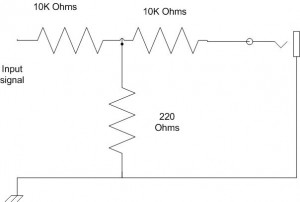
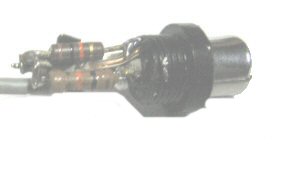
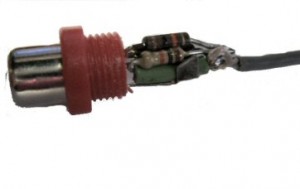
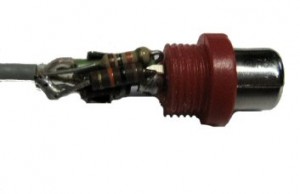
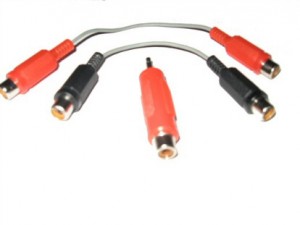
You can build these into any type of connector such as XLR or phone.
For more information check this site out.
Electronics Tutorial about the Passive Attenuator and Attenuator Design including T and Pi Attenuators used to control Impedance Mismatch
Source: Passive Attenuator Tutorial for Passive Attenuators
The same theory applies to power soaks. The difference is that speakers have coils and coils have a reactive component.


